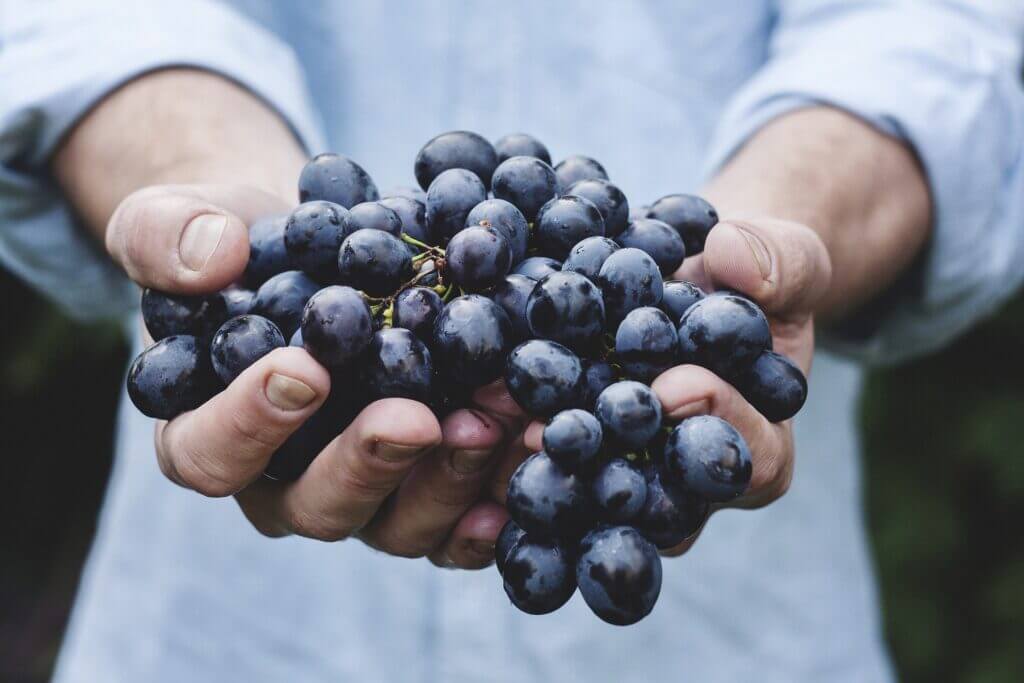
This story was originally published in the July 2017 issue of Wonderful West Virginia. To subscribe, visit wonderfulwv.com.
West Virginia’s wild grapes offer unique flavors not found in the supermarket aisles.
Anyone familiar with the story of Adam and Eve knows about the temptation of fruit. But in this case, one man’s craving for a neighbor’s grapes ultimately led him down a fruitful path to winemaking.
In the 1980s, Jerry Deal ran a real estate business on Inglewood Boulevard in Morgantown. Bordering the property were grapevines belonging to an elderly neighbor. Deal often found himself plucking a few grapes at a time and popping them into his mouth. He figured they were fair game—after all, the vine was leaning on his side of the fence.
photographed by James H. Miller & Ted Bodner
The neighbor eventually had enough and unleashed her wrath over the grapes. “She said, ‘Stop stealing my grapes! Plant your own!'” Deal says. So plant, he did. Deal now has 12 acres of vineyards and operates one of the largest wineries in West Virginia, the Forks of Cheat Winery.
Although Deal also grows non-native grapes, he successfully capitalized on a resource often overlooked and underappreciated in the Mountain State the wild grape. West Virginia has six main types of wild grapes, says Brad Cochran, extension agent for community and agriculture resource development at West Virginia State University.
The six varieties are:
- Fox grapes (black, purple, sweet)
- Summer grapes (dark purple, black, slight white cast)
- Riverbank grapes (blue, black)
- Winter grapes (small, black)
- Sand grapes (small, black, shiny, slightly flattened)
- Muscadines (purplish, sweet, large)
“They start to bloom around May and, as the summer comes along, they pop up and ripen for harvesting between September and November,” Cochran says.
West Virginia has six varieties of wild grapes, as pictured below.
photographed by Robert Mohlenbrock
image courtesy of the USDA
photographed by Carl Hunter
image courtesy of the USDA
photographed by Bill Summers
photographed by James H. Miller & Ted Bodner
Finding the Fruit
All six varieties are edible, but identifying them can be tricky to the untrained eye. “You’ve got to look at them closely,” he says. “Otherwise, it’s just a wild grape to the average Joe. You have to start counting and getting down into the twigs and leaves to really tell the difference.”
West Virginia’s wild grapes flourish in different environments. For instance, the muscadine grape can be found mostly in just four southern counties: Wyoming, Fayette, Randolph, and Summers. Riverbank grapes are commonly found along—you guessed right—streams and riverbanks. The sand grape can be found in sandy soil.
grapes in the wild: pokeberries, above, and moonseed, below.
image courtesy of the USDA
As for taste? Don’t expect wild grapes to taste like what you might pick up from the supermarket, Cochran says. “There are a lot of variations to the taste,” he says. “It’s mostly determined by the year we had, in regards to climate. Was it wet? Or was it dry? What were the temperatures like? A summer grape from 2017 will likely taste different from a summer grape in 2018.”
Consistency is the key to the perfect-tasting grape, Cochran says. Rainfall every two or three days and a consistent temperature will keep grapes hydrated and healthy. “The more moisture, the juicier the grape,” he says.
But beware if you venture out into nature in search of wild grapes. You do not want to chomp down into wild grape look-alikes moonseed or pokeberry. Both are poisonous. Cochran says moonseed could easily be confused for wild grapes, from the appearance of the fruit itself to its leaves. “They grow similarly,” he says. “But moonseed fruit is more elongated than the typical grape. At quick glance, though, you could dive right in and grab one.”
The seeds are also different. Moonseeds have a single crescent-shaped seed while grapes have round seeds. Also, the rank taste should give you a good idea if you’ve accidentally eaten a moonseed.
image courtesy of the Federal Highway Administration
photographed by Joachim Schmid
Pokeberries are a little easier to distinguish from wild grapes, Cochran says. This highly toxic weed produces fruits that look more like blueberries or
blackberries.
Wine and Dandy
In West Virginia, wild grapes are used to make jams, jellies, and, of course, wines. But grapes and grapevines also offer habitat, food, and cover for birds, raccoons, rabbits, and other small mammals, Cochran says.
For Deal, those critters have a negative effect on his vineyards outside Morgantown. “We’re at the mercy of deer and birds and weather,” he says. “All kinds of things can go wrong.” Two years ago, Deal says temperatures dipped to 15 below zero and wiped out five acres of grapes.
On the plus side, there are always options for grapes gone bad. Deal uses excess and imperfect grapes for cooking into brandy or grappa, a grapebased pomace brandy of Italian origin.
Today, Forks of Cheat produces more than 20,000 gallons of wine each year from native grapes along with French hybrid grapes. The bottles are sold in
locations across the state and in Maryland.
And it all started from one man’s desire for some wild grapes.
written by Jake Stump
